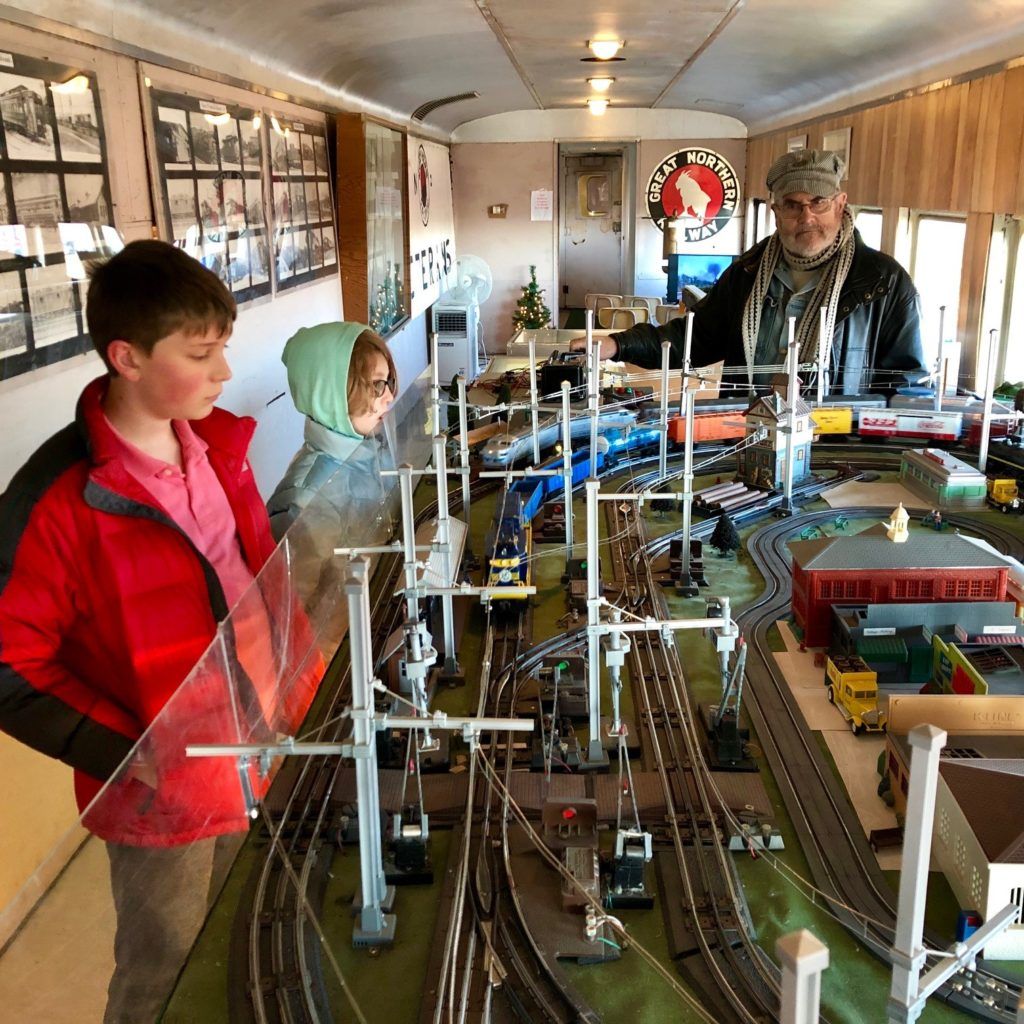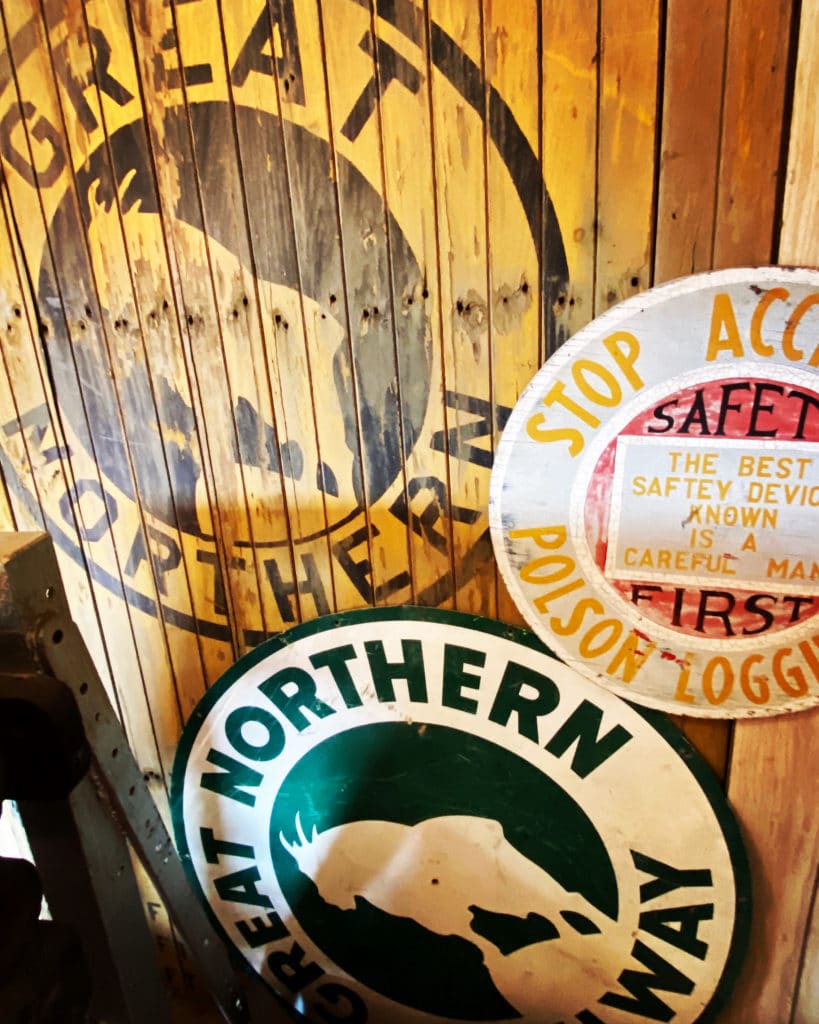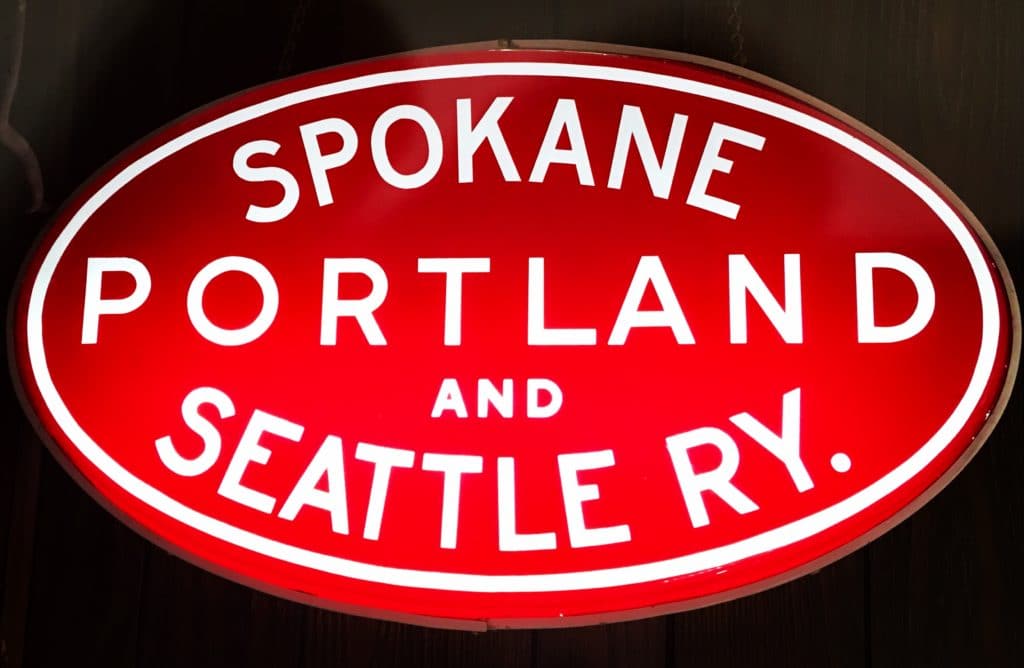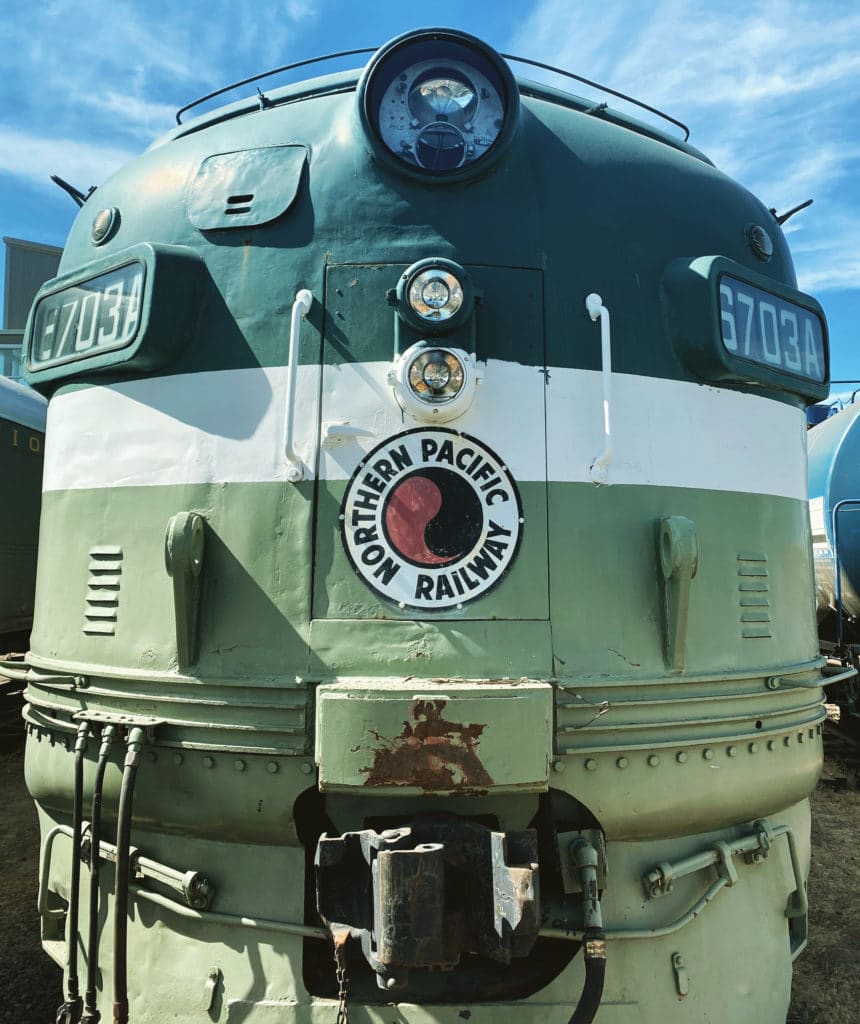We feature operating model train layouts in various gauges for enjoyment by visitors of all ages.




Inland NW Rail Museum
We feature operating model train layouts in various gauges for enjoyment by visitors of all ages.




The Inland NW Rail Museum features a museum train filled with displays, as well as indoor displays on two floors in our Lee Tillotson Conservation and Restoration Center. Special collections include a focus on the Western Union company, all of the railroads that have served our region (Great Northern, Northern Pacific, Milwaukee Road, Union Pacific, Spokane International, Spokane, Portland and Seattle, Burlington Northern), area train stations and yards, and much more.





A gift of the BNSF Railway, this SD9 was built for the Great Northern in 1958 as #598 for service around Klamath Falls and later spent many years serving the Interbay yard in Seattle before being retired by the BNSF as #1730. Unique for its dynamic braking system, it was last transported on a mainline in 2005 before coming to the museum in 2020. We will restore this engine as we are able.

Built in 1943 by Industrial Brown Hoist, the wrecking crane weighs 390,000 pounds. Changed from a steam to Caterpillar D-8 industrial engine in 1956. Served as NP #45.
The F9 locomotive was built in 1956 by the Electro-Motive Division (EMD) of General Motors as N.P. 7010D (builder’s number 21105), part of a 4-unit set for freight service. F9 locomotives first went into service on the NP in 1954, assigned to the tough hill between Livingston and Bozeman. By the mid-1960s, N.P. needed more passenger locomotives, but by then, the F9 was no longer available for purchase as a new locomotive, so the N.P. converted this unit by adding a steam heat boiler for passenger use. Because there was no room for a water tank, piping was added to draw water from other units, or from a tank in the baggage car. Thus the unit was renumbered and became 6703-A. As a passenger unit at the time of the 1970 B.N. merger, it was renumbered again to B.N. 9812. It was again converted to freight service with the removal of the steam boiler and became B.N. 778. It was last used in revenue freight service in 1981 before serving as a power car for a rotary snowplow. The engine has been repainted in its original Northern Pacific color scheme.

A railcar mover is a road-rail vehicle that can be used to move a small number of cars around in a rail siding or small yard, while being much less expensive to operate than a typical switcher. Our Trackmobile came from the Kaiser Aluminum plant north of Spokane.
Built in about 1941 by the Great Northern Railway’s St. Cloud shops, it is typical of G.N.’s tongue and groove siding, 30-foot cabooses. Most were made with wood tongue-and-groove strips; some were made with plywood. The final cars were all steel. IERHS purchased the caboose, at the time painted B.N. green and numbered B.N. 11242, and moved it to the fairgrounds. It is restored to a G.N. 1940s color scheme.

This streetcar was built for the Washington Water Power Co. by J.G. Brill in 1906. It became part of the Spokane United Railways system when the street car lines of WWP and Spokane Traction Co. were consolidated. From about 1938, two years after street car use was discontinued in Spokane, until the 1960s, it served as a restaurant in Chewelah, Wash. It was donated to the IERHS in 1979.



Built in 1914 by Pullman as a Harriman-Standard full-service diner for the Union Pacific, it was changed to a lunch counter diner after just a few years service. It was last used on the Hinkle, Ore., work train. It was donated to the IERHS by the U.P. in 1986. After some interior restoration work it was moved to the Museum Display Train for the 1998 Spokane Interstate Fair.


Built by Pullman-Standard for Northern Pacific’s North Coast Limited in 1946 as a 56-seat coach. Originally painted in N.P.’s dark green and black, it was the first coach repainted in the Lowey two-tone green scheme. It was a work train bunk car on the B.N. in the 1970s and 1980s. IERHS purchased from a scrap dealer in 1988. It was a mess – no windows, no lights and lots of rust. It is now partially restored and serves as a display car.
